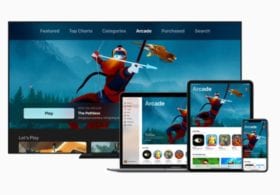
V. Paul Coyne, CEO of discovery, distribution and monetization management platform Glewed TV, offers his take on Disney+ and its impact on the streaming ecosystem.
 By far one of the most talked about cultural events of the year, the launch of Disney+ marked a momentous occasion for the streaming industry and the entertainment industry as a whole. It far outshadowed the launch of Apple TV+ just three weeks prior, and although its true impact remains to be seen, there is no question that it underscores Disney’s cultural and economic might. Most of the current conversation around Disney+ has centered around the titles in its library and the shows in its development slate, but I’m more interested in exploring what Disney+’s launch means for the future of the television industry, as well as the effect it will have on competitors like Netflix and Amazon Prime. If Disney plays its cards right, it could end up beating Netflix at its own game – and becoming the industry’s de facto leader.
By far one of the most talked about cultural events of the year, the launch of Disney+ marked a momentous occasion for the streaming industry and the entertainment industry as a whole. It far outshadowed the launch of Apple TV+ just three weeks prior, and although its true impact remains to be seen, there is no question that it underscores Disney’s cultural and economic might. Most of the current conversation around Disney+ has centered around the titles in its library and the shows in its development slate, but I’m more interested in exploring what Disney+’s launch means for the future of the television industry, as well as the effect it will have on competitors like Netflix and Amazon Prime. If Disney plays its cards right, it could end up beating Netflix at its own game – and becoming the industry’s de facto leader.
One of Disney+’s biggest advantages is the fact that it can be bundled with Hulu and ESPN+ for a discount, thus giving  people access to live television as well as some sporting events without being beholden to a cable company. The ability to watch shows from all broadcast networks, as well as the option to add on premium channels such as HBO and Showtime, is a powerful enticement for people to subscribe especially when coupled with Disney’s deep catalogue of classic films, Marvel properties, and other crowd-pleasing fare. It has already proven to be a huge draw: the mobile app has been downloaded over 15 million times thus far, and $5 million worth of in-app purchases have been made since the service’s launch.
people access to live television as well as some sporting events without being beholden to a cable company. The ability to watch shows from all broadcast networks, as well as the option to add on premium channels such as HBO and Showtime, is a powerful enticement for people to subscribe especially when coupled with Disney’s deep catalogue of classic films, Marvel properties, and other crowd-pleasing fare. It has already proven to be a huge draw: the mobile app has been downloaded over 15 million times thus far, and $5 million worth of in-app purchases have been made since the service’s launch.
Moreover, the fact that Hulu’s service is ad-supported gives Disney another solid revenue stream which its competitors Netflix and Amazon Prime lack (although Amazon Prime does show commercials to viewers streaming NFL games on its service). Netflix in particular has continually insisted that it would not run commercials on its platform, which might please viewers but gives the company limited ways to make money. On top of that, the company has borrowed billions of dollars that it has lavished on a huge slate of original content as well as high-profile, big money production deals with luminaries such as Ryan Murphy and the Obamas. In the short run, this strategy seems to have worked to draw people to the platform; whether Netflix’s current rates of spending are sustainable, especially considering the lack of additional revenue streams, is debatable.
It’s here that Disney+ clearly has the advantage, as its parent company is hugely profitable and already producing content to air on its television channels and in theaters. Disney is also the only player with a broadcast network, so they receive retransmission fees as well as reverse compensation fees (fees paid by television stations to a television network in exchange for being affiliated with that network). In other words, it doesn’t matter if Disney+ is unprofitable, so long as it keeps people in the Disney family.
That being said, the rollout of Disney+ hasn’t been completely smooth. Many would-be subscribers were left disappointed when its servers crashed on the day of its launch, leaving them unable to log in or view content. While that problem was quickly solved, The Washington Post reports that hackers have taken over thousands of user accounts and are now selling them to others while users attempt futilely to contact Disney+ customer service. In the scheme of things, these issues are serious but fixable; yet they are indications of a service that was introduced to the public perhaps a bit too soon.
It’s no coincidence that two of the first Disney+ originals involve some of Disney’s most cherished and nostalgic properties. Star Wars is a cultural touchstone for people of all ages, whereas High School Musical is especially beloved amongst millennials. Unlike Netflix, which does not have a repository of beloved characters or franchises that it can fall back on, and is thus more focused on creating original content (ie. not related to an existing franchise), Disney+’s main appeal to consumers lies in its back catalogue, which includes Marvel films, Pixar classics, and other childhood mainstays.
Whether nostalgia (and the presence of all things Star Wars) will be enough to keep viewers around is up for debate, but for now, with over 10 million accounts created on its first day alone, Disney+ is certainly on the path to success. The bigger question to my mind is whether this marks the beginning of the end of non-streaming television – and whether anyone can hope to compete with the might of Disney.






